In the world of interior design, one word is becoming more and more important - "Japandi". It is a fascinating combination of Japanese elegance and Scandinavian minimalism, which wins the hearts of lovers of unique design around the world. If you dream of a space where harmony and simplicity meet with functionality, then the Japandi style is for you. Get ready for a journey through minimalist interiors, in which the delicacy of Japanese accents mixes with the functionality of Scandinavian design. In this article you will discover why Japandi's style has become synonymous with contemporary elegance and how you can easily incorporate this philosophy to your home.

OQUID ODNIR SERVICE TABLE
Characteristics of Japandi
Ready for a little peace, balance and unique design? Get ready to browse the pages of this guide, which will not only be a source of inspiration, but also a practical guide to the world of Japandi. Immerse yourself in harmony and invite it to your interior today!
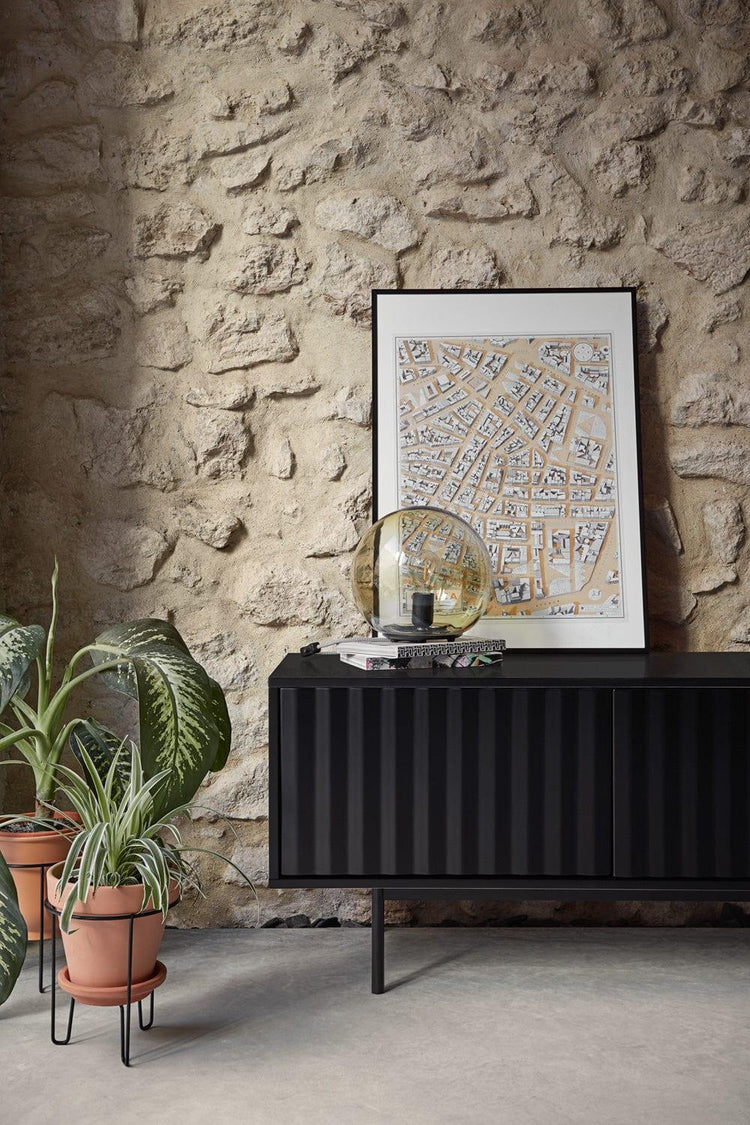
Sierra RTV cabinet
Scandinavian minimalism and Asian design: simplicity of forms, bright colors, functionality
Style Japandi is a unique meeting of two distant cultures - Scandinavian minimalism and Japanese design, which make up a harmonious whole. On the one hand, the Scandinavian design inherited from the north brings to this combination the simplicity of forms, bright, neutral colors and thoughtful functionality. In this context, each element of the interior has its place and purpose, and the space is clean, full of light and pleasant to the eye. On the other hand, the Asian style brings to this mix the delicacy and subtlety of inspiration Japanese aesthetics. This combination brings a result, which not only reflects minimalism in its purest form, but also reflects the deep philosophy of balance and harmonized existence. As a result, the Japandi style becomes not only an aesthetic choice, but also a practical solution that combines the best features of both worlds.

Martina 3-person sofa
Japanese aesthetics: harmony, naturalness, balanced design
Japanese aesthetics, inscribed in the DNA of the culture of the Country of Cherry Blossom, is one of the key pillars of the Japandi style. This is not only a way of interior arrangement, but a real philosophy of life, whose features perfectly harmonize with the spirit of Scandinavian minimalism. In this context, harmony is a key element - both in the selection of colors and in the arrangement of space. The "Wabi-Sabi" concept, or recognizing beauty in imperfections, gives the interior a unique character. Japandi's naturalness is released by using raw, natural materials, such as wood or bamboo, which give the rooms heat and authenticity. Sustainable design is crucial for both cultures, which is visible in precise selection of decorative elements and furniture so as to create a coherent whole. Which is why, style Japandi not only draws on Japanese aesthetics, but also transfers her philosophy of harmony, naturalness and sustainable design to modern interiors, creating an atmosphere of peace and balance.
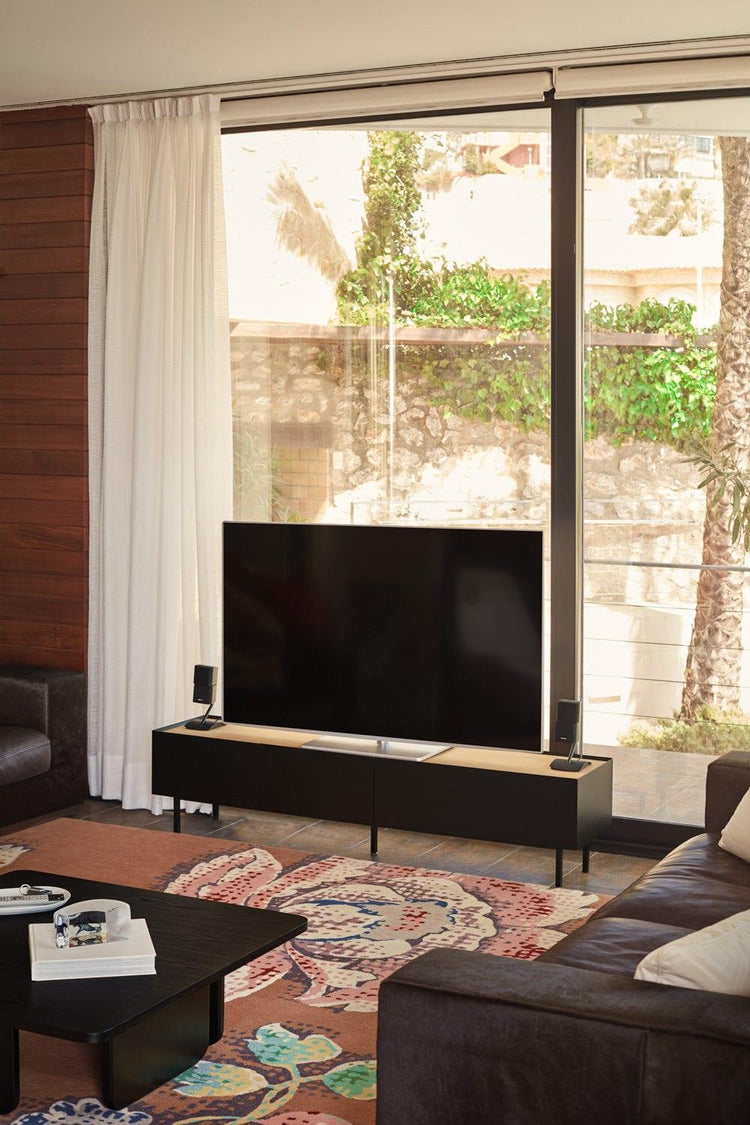
Arista RTV cabinet
A combination of wood and white: Key elements of the Japandi style
In the style of Japandi, the combination of wood and white is an undeniable key to creating an atmosphere of harmony and elegance. Wood, which is the foundation of this style, adds warmth and coziness, emphasizing the naturalness and balanced nature of the project. Used in furniture, floors or decorative details, wood gives space organic aesthetics. On the other hand, white acts as a neutral plane, opening the interior and adding a modern character to it. It is the minimalist combination of wood and white that allows you to freely use the space, without excess details, which is crucial for the style of Japandi. The harmonious balance between warm wood and cooling white creates a balanced, calm design, which promotes relaxation and at the same time emanates modern grace. This combination is the foundation of the Japandi style, transferring the tradition and functionality of wood to Scandinavian minimalism, creating interiors full of elegance and simplicity.
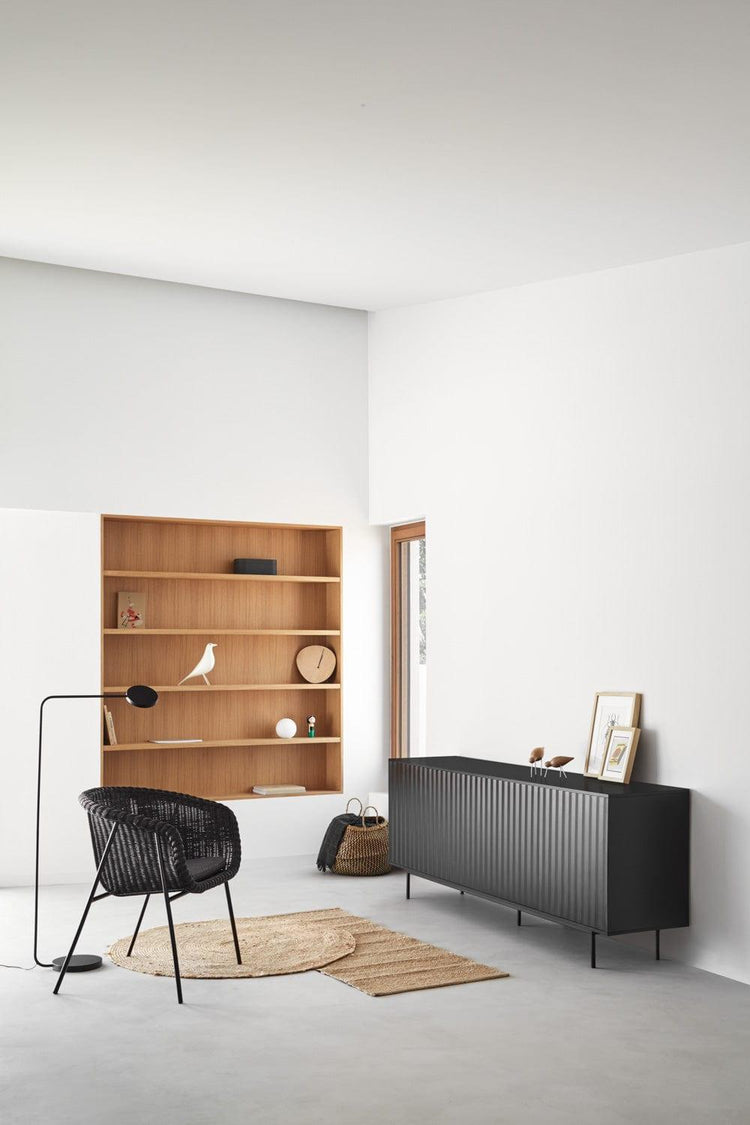
Sierra chest of drawers
Minimalist accessories and accents
In the style of Japandi, the mystery lies in the art of skillful limitation - this also applies to minimalist add -ons and subtle accents. Characterized by the simplicity of forms, minimalism in the style of Japandi rejects excess decorations in favor of selected, functional details. Guided by the "less is more" principle, minimalist additions emphasize the beauty of the space, leaving space for free flow of energy. Japaners' style interiors decorate delicate ceramics, skillfully selected porcelain, as well as natural fabrics such as linen or wool. Potted plants, especially those with simple shapes, add coziness, restoring connectivity with nature. At the same time, neutral colors and subtle accessories designs create a coherent whole, emphasizing the essence of minimalist design. As a result, minimalist accessories in the style of Japandi not only decorate, but also enrich the space, adding its sophisticated character and calm elegance.
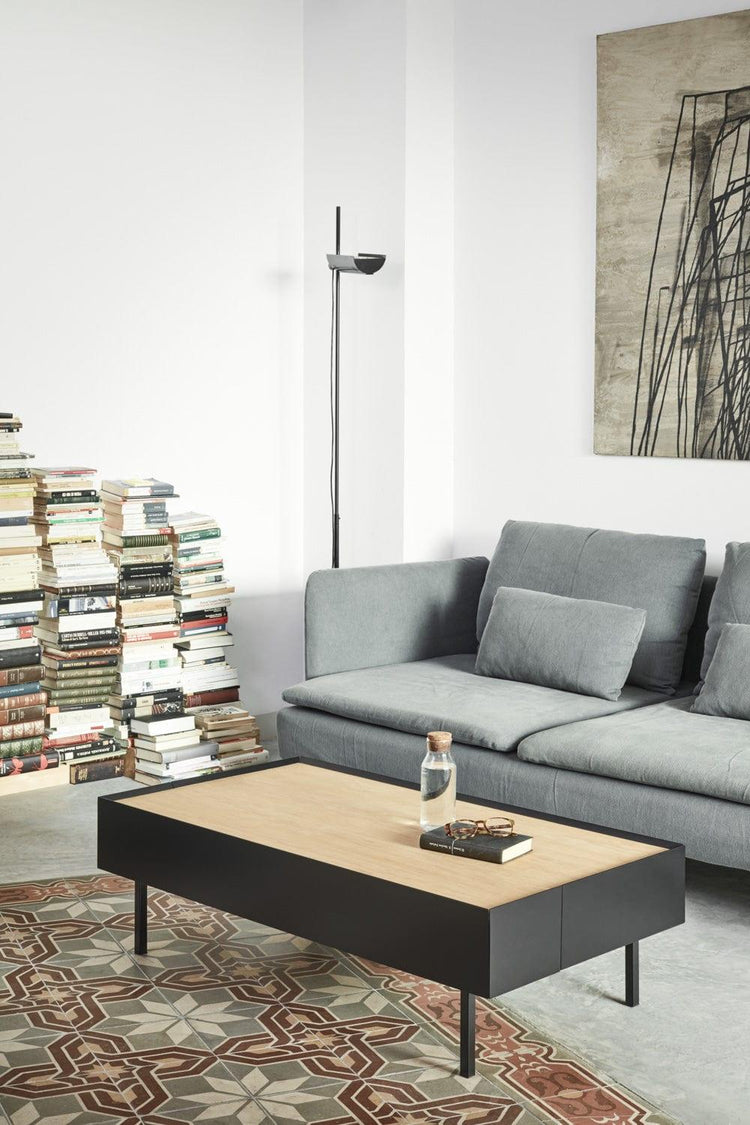
Arista coffee table
Color
Harmony plays a key role in the Japandi style, and neutral color palettes are the foundation of this balance. White, beige and gray shades dominate, creating a calm base for the interior. The whiteness of the space adds brightness and opens the rooms, creating the impression of spaciousness, while beige and gray give the interior warmth and elegance. This subdued color palette perfectly harmonizes with the principles of minimalist design, creating an atmosphere of peace and balance.
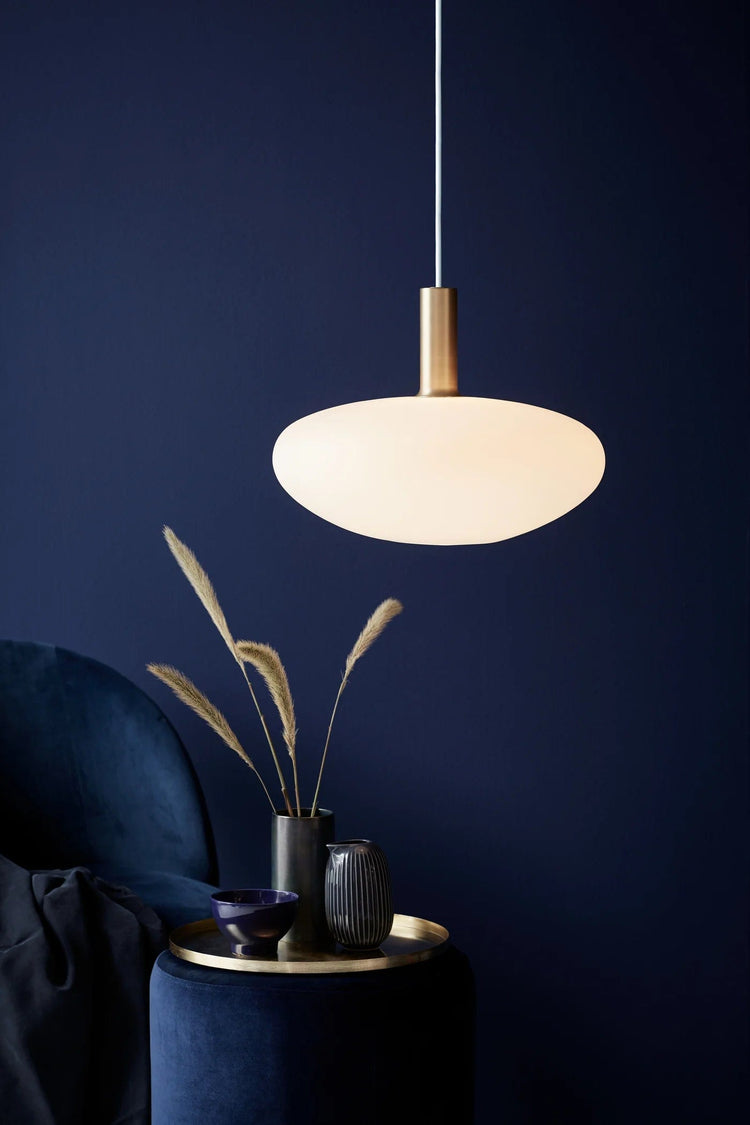
Alton hanging lamp
Delicate color accents inspired by nature
Although neutral shades dominate, Japandi's style draws inspiration from nature through subtle color accents. Delicate greens, pastel blue or subdued browns act like a breath of fresh air, adding life to the interiors and recalling harmony with the surrounding world. These color accents are like gentle brush strokes on canvas, balancing the minimalism of neutral tones and giving the space a unique character.
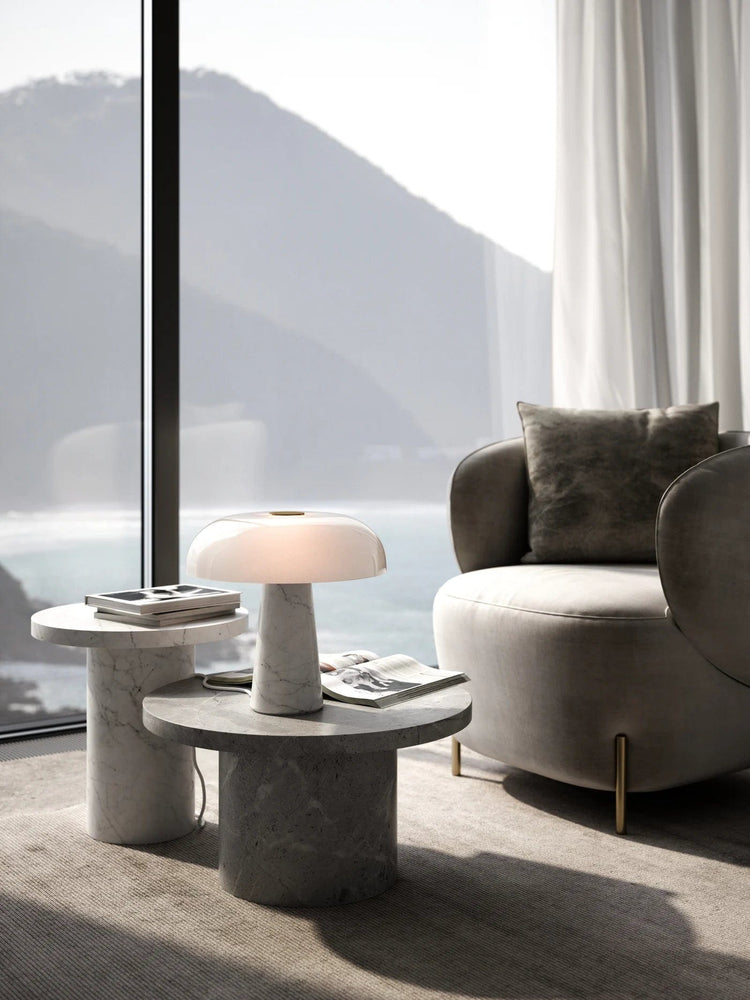
Glossy marble table lamp
Appropriate use of colors in individual rooms
In the Japandi style, the right use of colors in individual rooms is the key to obtaining the desired atmosphere. Bright white can be perfect for spacious salons, while delicate beige will be great in the bedrooms, giving them a calm character. Gray, in turn, can be used to emphasize the elegance and functionality of the kitchen or office. Thanks to this balanced approach to colors, the Japandi style allows you to create a coherent and matched interior, adapted to the functions of individual rooms.
Use of natural materials: wood, bamboo, linen
Style Japandi puts emphasis on close relationships with nature by using natural materials. Wood, especially in warm shades, is the heart of the project, adding coziness and natural beauty to the interiors. Bamboo, in turn, introduces a subtle exotic, at the same time emphasizing the balanced nature of the design. Len, used in both textiles and decorations, adds lightness and delicacy, emphasizing the organization of this style.
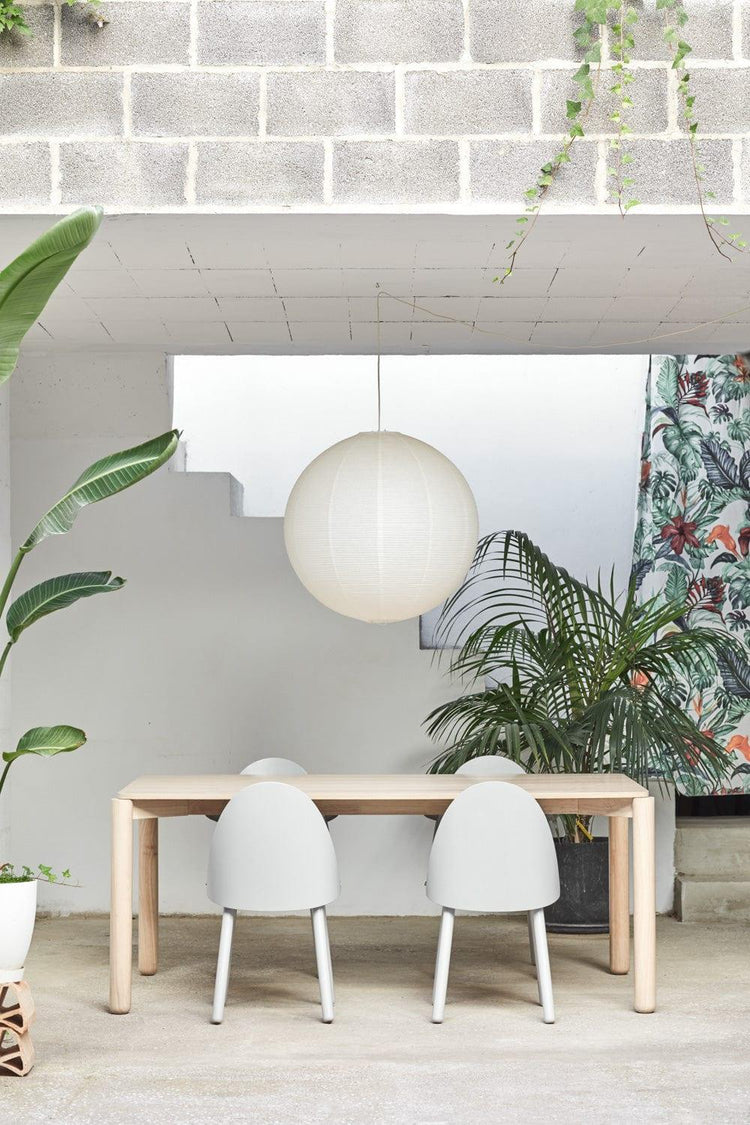
Dining table wooden atlas
Smooth surfaces and matte finishes
In the style of Japandi, smooth surfaces and matte finishes play a key role, creating a coherent and elegant design. Furniture with silky smooth lines and matte finishes emphasize the simplicity of form, while ensuring delicacy to the touch. This approach to surface finish is conducive to harmony and peace, which is characteristic of the aesthetics of both Scandinavian minimalism and Japanese design.
Textiles inspired by Japanese craftsmanship
Japandi's style textiles are like works of art, referring to traditional Japanese craftsmanship. Patterns inspired by nature, such as bamboo leaves or butterflies, give textiles deep sense and meaning. Materials such as silk, cotton or linen not only introduce natural textures into the interior, but also relate to the Japanese craft tradition. This subtle accessories, such as pillows, rugs or rugs, create a coherent story about harmony and elegance throughout the interior.
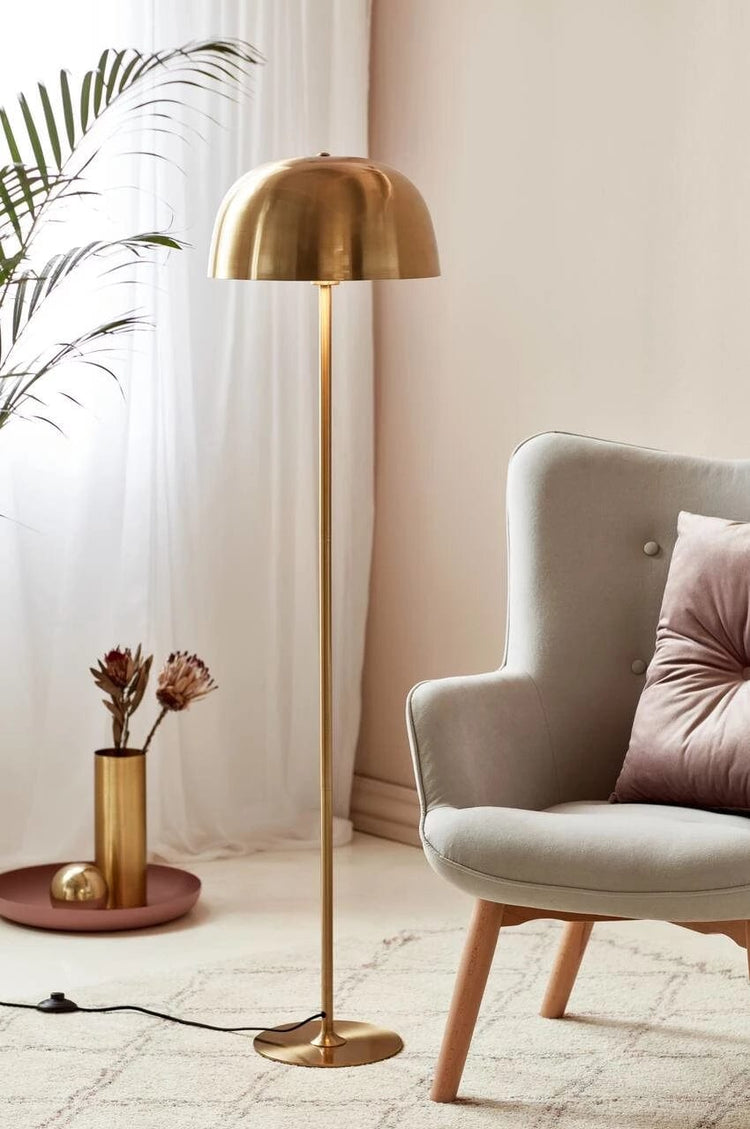
Cera floor lamp
Decorative furniture and elements
Japandi style furniture is a real triumph of minimalist design, combining Scandinavian simplicity with Japanese functionality. Characterized by clean lines and a harmonious combination of form with the function, this furniture not only enhances the elegance of space, but also provide practical solutions. Passing far beyond the usual equipment, minimalism in the design of the Japandi style furniture makes every element has its own meaning, which translates into ergonomic and effective use of space.
Less is More concept - limiting the number of items
The Japandi style fully adopts the principle of "Less is More", which means consciously limiting the number of objects to absolutely necessary ones. The space is nurtured with attention to every detail, which translates into minimalist compositions, in which each element has its place and purpose. A limited number of furniture and decorations emphasizes simplicity, creating an atmosphere of peace, and at the same time enabling a sophisticated use of space.
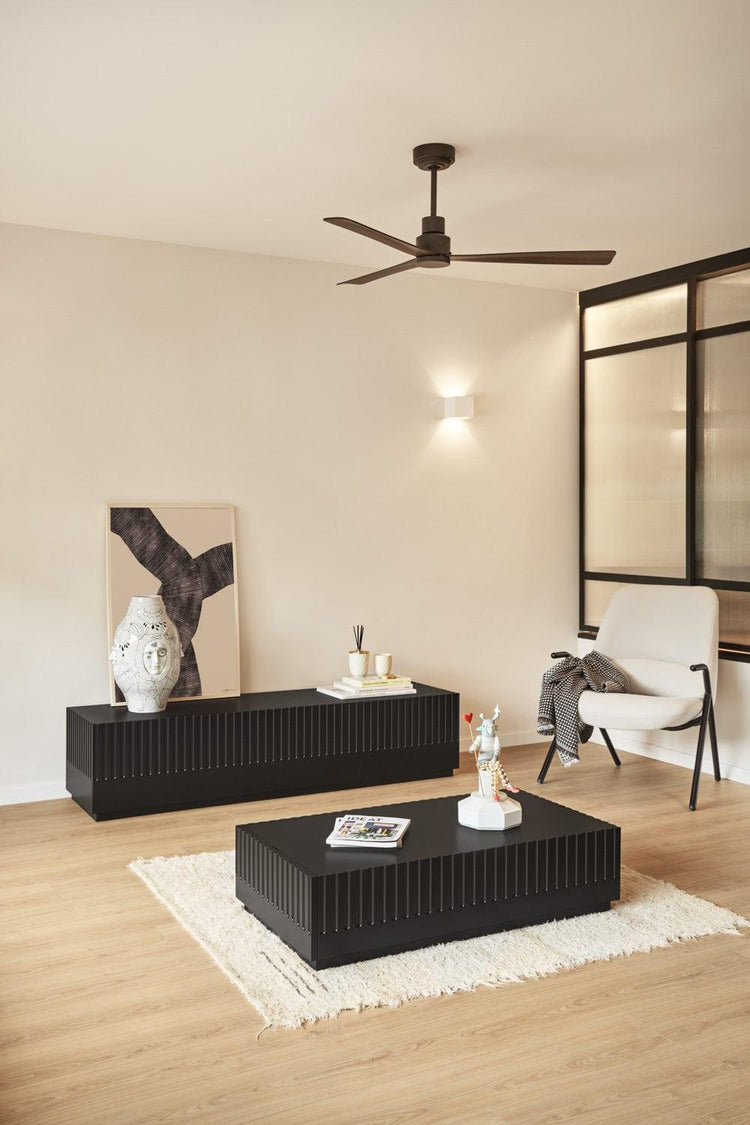
Doric RTV cabinet
Traditional Japanese decorative elements
To fully reflect the essence of the Japandi style, it is worth reaching for traditional Japanese decorative elements. Lanterns, known as "Chōchin", add cozy light, creating an intimate atmosphere. Shoji, or wooden panels with rice paper, introduce delicacy and subtlety into the interior, while acting as screens separating the spaces. Bonsai, symbolizing harmony with nature, become not only a decoration, but also a source of peace and balance. Turning on these traditional decorative elements is a key step towards creating an authentic interior in the style of Japandi, emphasizing the beauty of simplicity and tradition.
The space and interior layout
In the style of Japandi, the space becomes a key element, and the open plans of the interior arrangement introduce a feeling of freedom and harmony. Large windows, often without decorative curtains or curtains, allow for the free flow of natural light, which further emphasizes the atmosphere of peace and sustainable life. In this way, the interiors become more thoughtful, allowing the balance between nature and the architectural project.
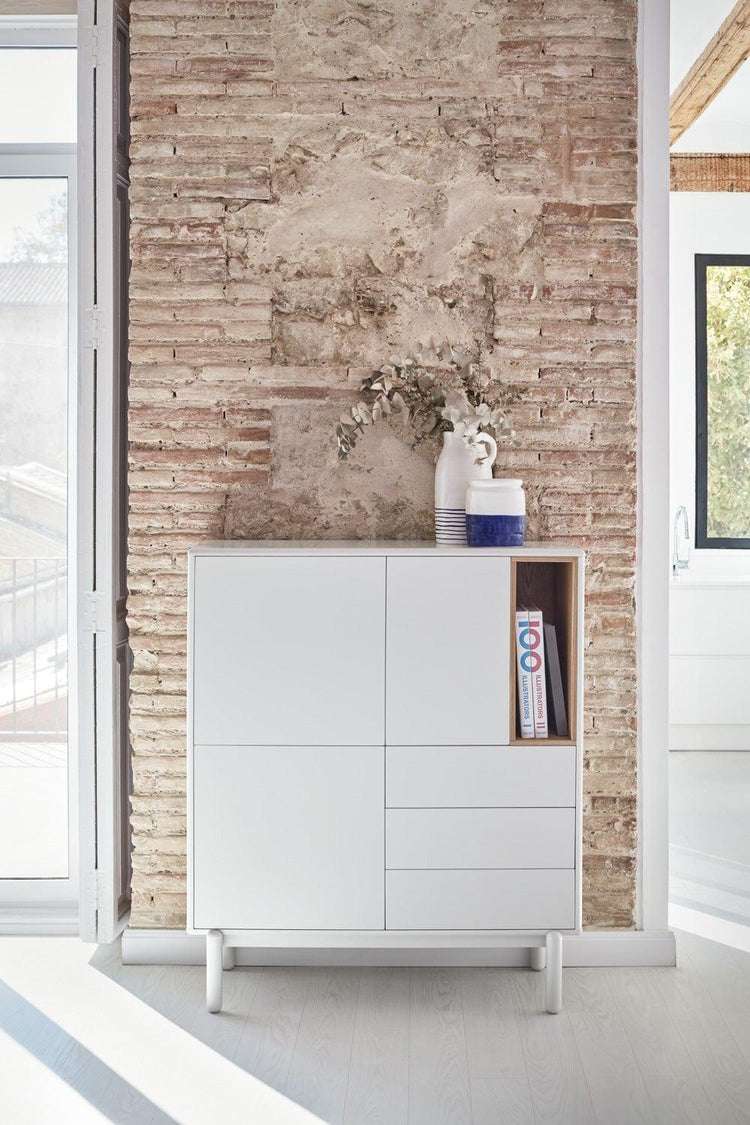
Corvo high chest of drawers
Separated relaxation and work zones
Japandi style interiors put emphasis on the balance between work and relaxation, which is often manifested by clearly defined zones at home. The use of delicate partition elements, such as Shoji or minimalist shelves, allows you to separate the space to work, while maintaining the openness of the room. The thoughtful arrangement of furniture and accessories is conducive to creating a relaxation zone, providing a cozy place to rest. This sophisticated approach to the organization of space in the style of Japandi allows harmonious coexistence of various functions, which makes the interior both aesthetic and practical.
Technology and design
Japandi style not only derives inspiration from tradition, but also strengthens its relationship with modern technologies. This harmonious relationship between traditional design and modern technological achievements is a key feature of the Japandi style. Modern technologies are introduced with subtlety, without violating minimalist aesthetics, which is a balance between functionality and elegance.
Nowadays, technology and design are becoming more and more integrated, and the Japandi style is perfectly absorbed in this trend. The Smart Home concept, understood and used in the context of Japandi, means not only functionality, but also harmony between man and technology. Intelligent devices, such as lighting or thermoregulation, are balanced with a conscious, minimalist approach to design, allowing to maintain peace and balance in everyday life. In this way, the Japandi style technology is not only a tool that facilitates life, but also an integral part of a coherent aesthetics, which makes the interiors become both modern and fully compatible with the spirit of tradition.

Side table for Sino Black Marble magazines with a black base
How to introduce a japandi style to your own home
The introduction of the Japandi style to your home can be an exciting journey towards harmony and elegance. For those who plan the interior metamorphosis, the key element is focusing on the balance between simplicity and functionality. We recommend limiting the number of objects, maintaining a neutral color palette and investing in furniture with minimalist forms.
When shopping, it is worth looking for brands specializing in the style of Japandi, such as those offering furniture from natural materials, clean lines and functional design. It is also worth looking for accessories inspired by Japanese craftsmanship to add a subtle charm to the interior.
For lovers of craft approach, the Japandi style offers endless DIY (Do It Yourself) capabilities. Creating your own decorative elements, such as pillows or paintings, can be not only satisfying, but also allows you to get even more deeper into the harmony of the interior. Let this journey towards Style Japandi become not only a design process, but also an expression of personal philosophy of balance and beauty in your own home.
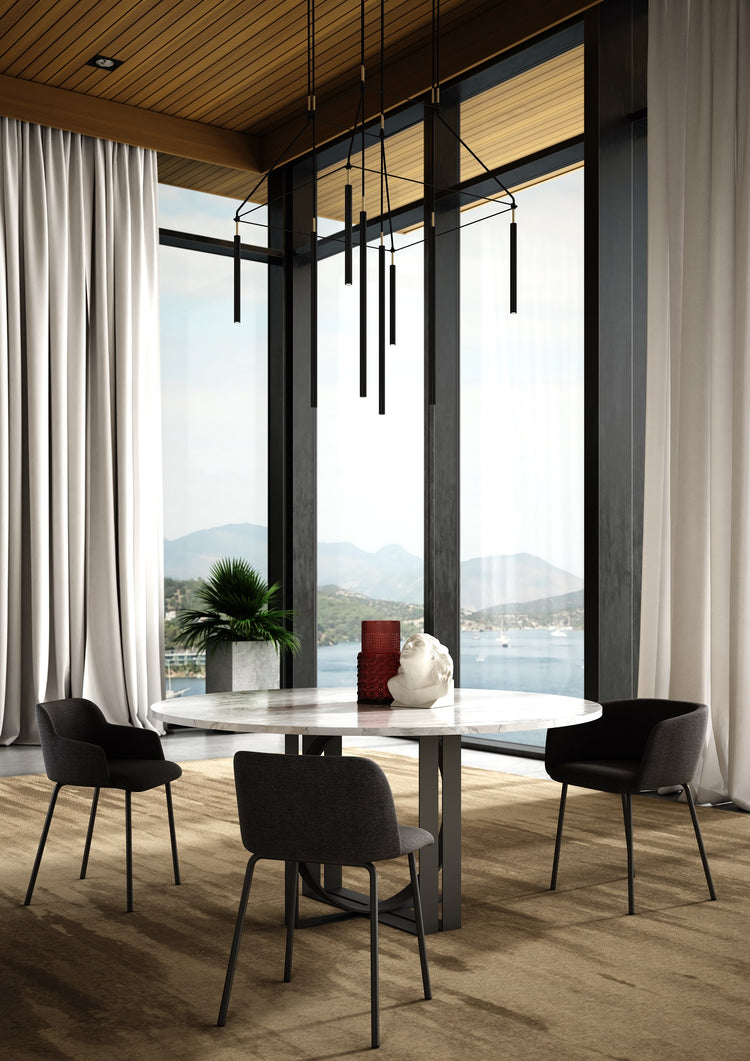
Laroc 212 chair
Case study: Sample Japandi interior
Looking at a specific interior design in the style of Japandi opens the door to aesthetic perfection and functional harmony. In the analysis of this concrete, we notice a balanced color palette, dominating in neutral shades that create a calm background for the rest of the elements. Wood, the main character of this interior, plays a key role, giving warmth and naturalness, both in furniture and in decorative details.The furniture used express the essence of Japandi through minimalist forms and functionality. Ergonomic chairs and low coffee tables, kept in straight ropes, create a space that combines elegance and comfort. In addition, delicate pillows and rugs with natural textures add coziness to the interior, creating the perfect place to rest.
It is also unusual to use traditional Japanese decorative elements such as Shoji or Bonsai. SHOJI wooden panels act as a partition, creating subtle demarcation between spaces, while bonsai, placed in minimalist pots, introduce nature into the interior.
This case study shows how the harmonized combination of cultural inspiration and modern design creates unusual interiors in the style of Japandi. The solutions used not only meet the rules of the aesthetics of this style, but also perfectly respond to the needs of everyday life, creating a space in which functionality meets with beauty.

Wooden arq dining table
Style Japandi, full of harmony and elegance, not only catches the eye with its aesthetics, but also offers practical solutions for everyday life. His uniqueness lies in perfect balance between Scandinavian minimalism and Japanese aesthetics, which creates spaces full of peace and balance. The advantages of this style seem endless: from the simplicity of forms, through the use of natural materials, to furniture functionality.
It is unusual how the Japandi style is able to attract the attention of both those who are looking for peace and those who value modern design. It is an invitation to discover the beauty of simplicity and experience the peace that you can experience in your everyday environment.
It is worth noting that the Japandi style is not only a ready pattern, but also an inspiration to experiment. We encourage you to adapt this style to your own preferences, add personal character and create a space that reflects individual taste and lifestyle. Let Japandi become not only fashion, but also a philosophy of interior design that opens the door to peace and beauty in its own home.



